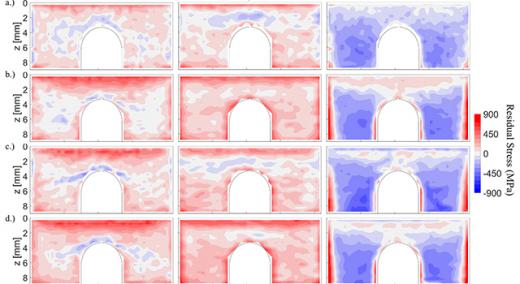Aresearch team has found that a method commonly used to skirt one of metal 3D printing’s biggest problems may be far from a silver bullet.
|
ADVERTISEMENT |
For manufacturers, 3D printing, or additive manufacturing, provides a means of building complex-shaped parts that are more durable, lighter and more environmentally friendly than those made through traditional methods. The industry is burgeoning, with some predicting it to double in size every three years, but growth often goes hand in hand with growing pains.
Residual stress, a by-product of the repeated heating and cooling inherent to metal printing processes, can introduce defects into parts and, in some cases, damage printers. To better understand how residual stress forms, and how it might be curbed, researchers at the National Institute of Standards and Technology (NIST), Lawrence Livermore National Laboratory, Los Alamos National Laboratory, and other institutions closely examined the effects of different printing patterns in titanium alloy parts made with a common laser-based method.
…

Add new comment